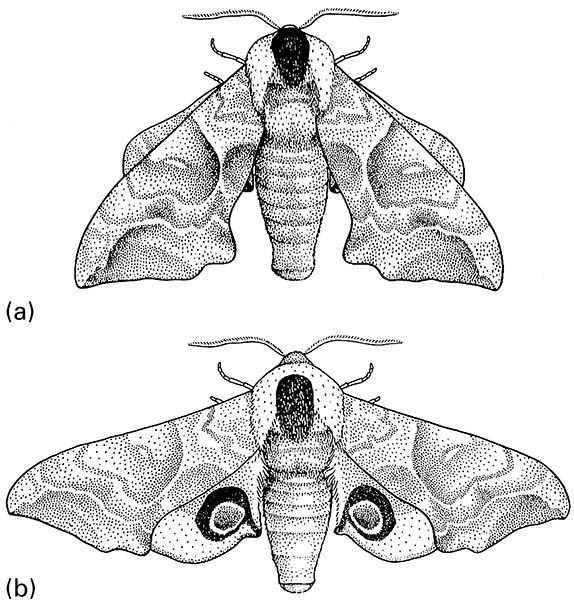14.2. Secondary lines of defense
Little is known of the learning processes of inexperienced vertebrate predators, such as insectivorous birds. However, studies of the gut contents of birds show that cryptic insects are not immune from predation (Box 14.1). Once found for the first time (perhaps accidentally), birds subsequently seem able to detect cryptic prey via a “search image” for some element(s) of the pattern. Thus, having discovered that some twigs were caterpillars, American blue jays were observed to continue to peck at sticks in a search for food. Primates can identify stick-insects by one pair of unfolded legs alone, and will attack actual sticks to which phasmatid legs have been affixed experimentally. Clearly, subtle cues allow specialized predators to detect and eat cryptic insects.
Once the deception is discovered, the insect prey may have further defenses available in reserve. In the energetically least demanding response, the initial crypsis may be exaggerated, as when a threatened masquerader falls to the ground and lies motionless. This behavior is not restricted to cryptic insects: even visually obvious prey insects may feign death (thanatosis). This behavior, used by many beetles (particularly weevils), can be successful, as predators lose interest in apparently dead prey or may be unable to locate a motionless insect on the ground. Another secondary line of defense is to take flight and suddenly reveal a flash of conspicuous color from the hind wings. Immediately on landing the wings are folded, the color vanishes, and the insect is cryptic once more. This behavior is common amongst certain orthopterans and underwing moths; the color of the flash may be yellow, red, purple, or, rarely, blue.
A third type of behavior of cryptic insects upon discovery by a predator is the production of a startle display. One of the commonest is to open the fore wings and reveal brightly colored “eyes” that are usually concealed on the hind wings (Fig. 14.4). Experiments using birds as predators have shown that the more perfect the eye (with increased contrasting rings to resemble true eyes), the better the deterrence. Not all eyes serve to startle: perhaps a rather poor imitation of an eye on a wing may direct pecks from a predatory bird to a non-vital part of the insect’s anatomy.
An extraordinary type of insect defense is the convergent appearance of part of the body to a feature of a vertebrate, albeit on a much smaller scale. Thus, the head of a species of fulgorid bug, commonly called the alligator bug, bears an uncanny resemblance to that of a caiman. The pupa of a particular lycaenid butterfly looks like a monkey head. Some tropical sphingid larvae assume a threat posture which, together with false eyespots that actually lie on the abdomen, gives a snake-like impression. Similarly, the caterpillars of certain swallowtail butterflies bear a likeness to a snake’s head (see Plate 5.7). These resemblances may deter predators (such as birds that search by “peering about”) by their startle effect, with the incorrect scale of the mimic being overlooked by the predator.

(a) The brownish fore wings cover the hind wings of a resting moth. (b) When the moth is disturbed, the black and blue eyespots on the hind wings are revealed. (After Stanek 1977)

